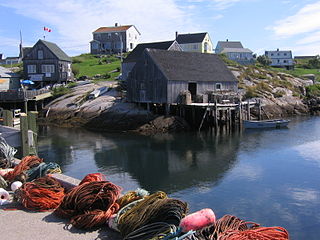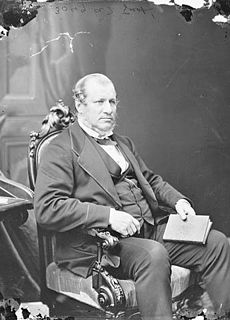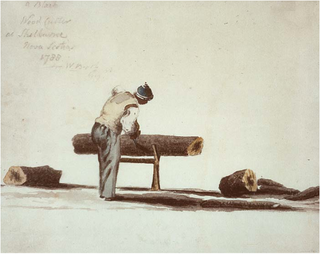Related Research Articles

The Maritimes, also called the Maritime provinces, is a region of Eastern Canada consisting of three provinces: New Brunswick, Nova Scotia, and Prince Edward Island (PEI). The Maritimes had a population of 1,813,606 in 2016, which makes up 5.6% of Canada's population. Together with Canada's easternmost province, Newfoundland and Labrador, the Maritime provinces make up the region of the Atlantic provinces.

The British colonization of the Americas was the history of establishment of control, settlement, and colonization of the continents of the Americas by England, Scotland and Great Britain. Colonization efforts began in the 16th century with failed attempts by England to establish permanent colonies in the North. The first permanent British colony was established in Jamestown, Virginia in 1607. Over the next several centuries more colonies were established in North America, Central America, South America, and the Caribbean. Though most British colonies in the Americas eventually gained independence, some colonies have opted to remain under Britain's jurisdiction as British Overseas Territories.

Canadian Confederation was the process by which the three colonies of Canada, Nova Scotia, and New Brunswick were united into one federation called the Dominion of Canada on July 1, 1867. Upon confederation, what had formerly been called the Province of Canada was divided into the two provinces of Ontario and Quebec. Thus, the new Dominion initially consisted of four provinces, including the provinces of Nova Scotia and New Brunswick. Over the years since Confederation, Canada has seen numerous territorial changes and expansions, resulting in the current number of ten provinces and three territories.

A royal charter is a formal grant issued by a monarch under royal prerogative as letters patent. Historically, they have been used to promulgate public laws, the most famous example being the English Magna Carta of 1215, but since the 14th century have only been used in place of private acts to grant a right or power to an individual or a body corporate. They were, and are still, used to establish significant organisations such as boroughs, universities and learned societies.

Acadia was a colony of New France in northeastern North America which included parts of eastern Quebec, the Maritime provinces, and Maine to the Kennebec River. During much of the 17th and early 18th centuries, Norridgewock on the Kennebec River and Castine at the end of the Penobscot River were the southernmost settlements of Acadia. The French government specified land bordering the Atlantic coast, roughly between the 40th and 46th parallels. It was eventually divided into British colonies. The population of Acadia included the various indigenous First Nations that comprised the Wabanaki Confederacy, the Acadian people and other French settlers.

British North America comprised the British Empire's colonial territories in North America from 1783 to 1907, not including the Caribbean. The Atlantic island of Bermuda was grouped with the Maritimes from 1783 until the formation of the Canadian dominion, and thereafter generally with the colonies in the British West Indies, although the Church of England continued to place Bermuda under the Bishop of Newfoundland until 1919. The term was first used informally in 1783, but it was uncommon before the Report on the Affairs of British North America (1839), called the Durham Report. These territories today form modern-day Canada and the Pacific Northwest of the United States.

United Empire Loyalists is an honorific which was first given by the 1st Lord Dorchester, the Governor of Quebec, and Governor-General of the Canadas, to American Loyalists who resettled in British North America during or after the American Revolution. At the time, the demonym Canadian or Canadien was used to refer to the indigenous First Nations groups and the French settlers inhabiting the Province of Quebec.

Sir Alexander Tilloch Galt, was a politician and a father of the Canadian Confederation.

American Colonization Society (ACS), originally known as the The Society for the Colonization of Free People of Color of America, was founded in 1816 by Robert Finley to encourage and support the migration of free African Americans to the continent of Africa.

Events from the year 1831 in Canada.

French is the mother tongue of approximately 7.2 million Canadians according to the 2016 Canadian Census. Most Canadian native speakers of French live in Quebec, the only province where French is the majority and sole-official language. 77 percent of Quebec's population are native francophones, and 95 percent of the population speak French as their first or second language.

Scottish colonisation of the Americas comprised a number of failed or abandoned Scottish settlements in North America; a colony at Darien on the Isthmus of Panama; and a number of wholly or largely Scottish settlements made after the Acts of Union 1707, and those made by the enforced resettlement after the Battle of Culloden and the Highland Clearances.

British America comprised the colonial territories of the British Empire in America from 1607 to 1783. These colonies were formally known as British America and the British West Indies before the Thirteen Colonies declared their independence in the American Revolutionary War (1775–1783) and formed the United States of America. After the American Revolution, the term British North America referred to the remainder of Great Britain's Canadian possessions. That term was first used informally in 1783, but it was uncommon before the Report on the Affairs of British North America (1839), generally known as the Durham Report.

Acadian Lines was a Canadian coach operator based in Moncton, New Brunswick.

The history of New Brunswick covers the period from the arrival of the Paleo-Indians thousands of years ago to the present day. Prior to European colonization, the lands encompassing present-day New Brunswick were inhabited for millennia by the several First Nations groups, most notably the Maliseet, Mi'kmaq, and the Passamaquoddy.

Black Nova Scotians or African Nova Scotians are Black Canadians whose ancestors primarily date back to the Colonial United States as enslaved people or freemen, and later arrived in Nova Scotia, Canada during the 18th and early 19th centuries. As of the 2016 Census of Canada, 21,915 Black people live in Nova Scotia, most in Halifax. Since the 1950s, numerous Black Nova Scotians have migrated to Toronto for its larger range of opportunities. Before the immigration reforms of the 1960s, Black Nova Scotians formed 37% of the total Black Canadian population.
Canadian Crown corporations are corporations wholly owned by the Crown and most are agents of the Crown with each ultimately accountable, through a relevant minister, to Parliament for the conduct of its affairs. As a result, Crown corporations represent more broadly a specific form of state-owned enterprise owned by the Sovereign of Canada. They are established by an Act of Parliament and report to that body via the relevant minister in cabinet, though they are "shielded from constant government intervention and legislative oversight" and thus "generally enjoy greater freedom from direct political control than government departments."

A number of states and polities formerly claimed colonies and territories in Canada prior to the evolution of the current provinces and territories under the federal system. North America prior to colonization was occupied by a variety of indigenous groups consisting of band societies typical of the sparsely populated North, to loose confederacies made up of numerous hunting bands from a variety of ethnic groups, to more structured confederacies of sedentary farming villages, to stratified hereditary structures centred on a fishing economy. The colonization of Canada by Europeans began in the 10th century, when Norsemen explored and, ultimately unsuccessfully, attempted to settle areas of the northeastern fringes of North America. Early permanent European settlements in what is now Canada included the late 16th and 17th century French colonies of Acadia and Canada, the English colonies of Newfoundland (island) and Rupert's Land, the Scottish colonies of Nova Scotia and Port Royal.
The British American Land Company (BALC) was a company formed in 1832 for the purpose of purchasing land and encouraging British immigration to Lower Canada. It was founded and promoted by John Galt, Edward Ellice and others to acquire and manage the development of almost 1,100,000 acres of Crown land and other lands in the Eastern Townships of Lower Canada, in order to encourage the immigration of British subjects to the region. In comparison to the Canada Company, a similar enterprise in Upper Canada that thrived through collaboration with the local government, the BALC indulged in land speculation, made immigration a secondary priority, and struggled throughout its existence.
References
- 1 2 Elliott, Bruce S. The New Brunswick Land Company and the settlement of Stanley and Harvey
- ↑ Browde, Anatole Settling the Canadian Colonies: A Comparison of Two Nineteenth-Century Land Companies, Business History Review 76 (Summer 2002). pp. 299-335 (cited in Elliott)
- Report of the Directors of the New Brunswick and Nova Scotia Land Company (London: Arthur Taylor, 1832), Canadian Institute for Historic Microreproductions (CIHM) fiche N.63916, pp. 8, 11 (cited in Elliott)
- Little, J.I. Feast or Famine: The British American Land Company and the Colonization of the St Francis Tract (section of Nationalism, Capitalism, and Colonization in Nineteenth-Century Quebec: The Upper St Francis District), Kingston & Montreal: McGill-Queen's University Press, 1989, pp. 36–63 (cited in Elliott)